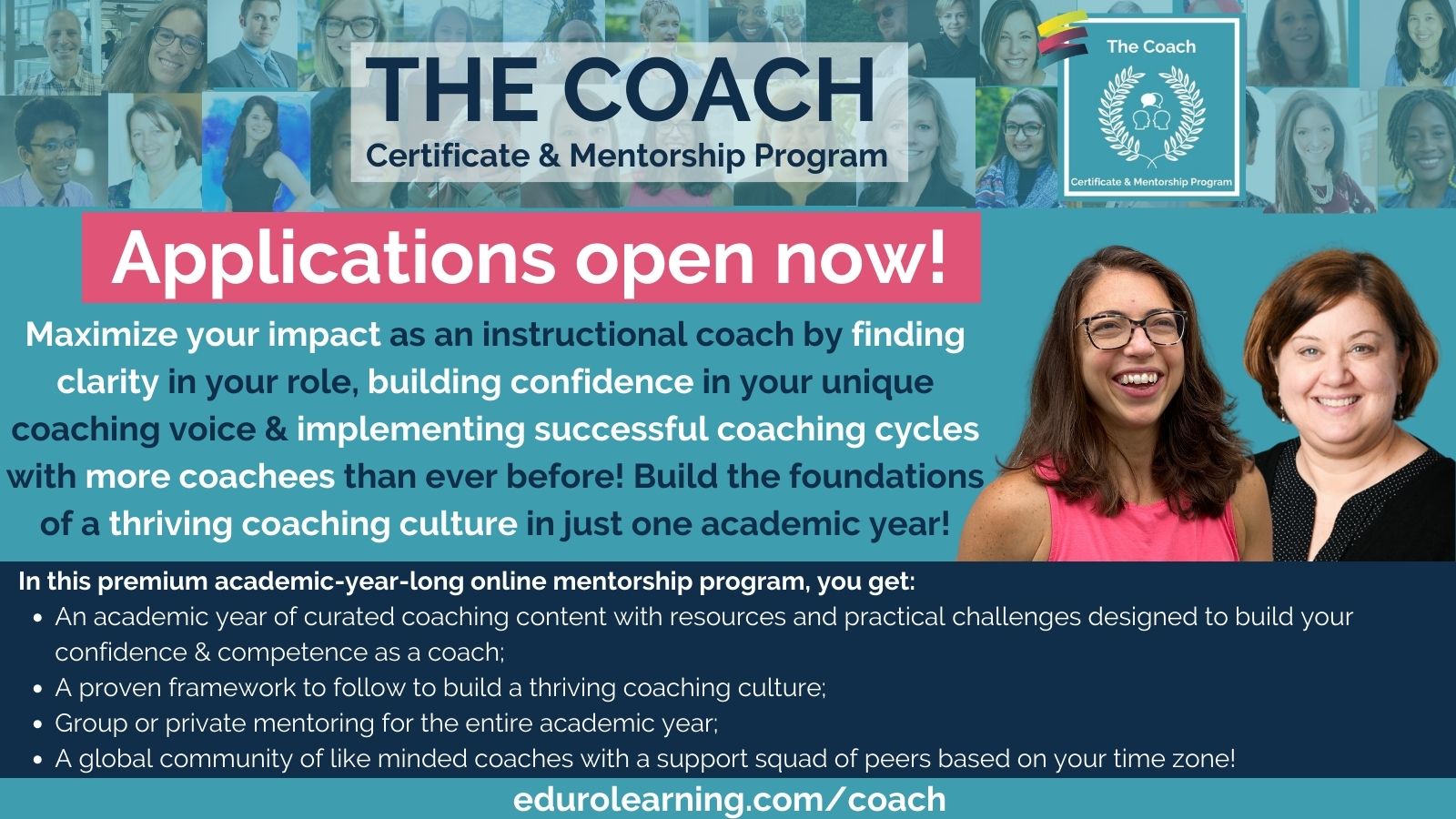Cross-posted on the Eduro Learning blog
We are continuing to have awesome conversations about instructional coaching at NIST!
Yesterday, I was chatting with Tosca and Brian about the instructional coaching protocol (soon to be shared!) that the Elementary teachers have co-created, and it’s outstanding! Tosca is in the process of hand drawing a beautiful graphic and when it’s ready we’ll share with the teachers (and you!).
Before we share the finished product though, one of the things that I found really interesting was our discussion about the different entry points to an instructional coaching conversation – basically the different ways that teachers would get started working with an instructional coach.
Here are the three that we uncovered as we explored the protocol ideas teachers shared with us:
1. Self-Reflection: Teacher Initiated
As teachers reflect on what’s working and where they’d like to improve, they may decide that they would like the support of a coach. The teacher would then approach the coach, perhaps with a specific idea or project they want to work on, or they might invite the coach to advise next steps.
I think, for most coaches, we hope this is the most common start to developing a coaching relationship. Teacher interest, investment and ownership of their goals will ultimately lead to a really valuable and productive working relationship.
2. Idea Generation: Coach Initiated
When coaches are working in lots of classrooms, they see lots of great teaching and learning in action. One observation in one classroom might spark a connection in the coach’s mind for another teacher.
Also, because coaches are super interested in their subject area, they are usually regularly reading, researching and seeking out new ideas that might support the learning in individual classrooms, grade levels or departments. In either of these cases, the coach might approach a teacher who they feel would be interested and ready for this new learning opportunity.
For some teachers, this might be a welcome and exciting experience. For others it could be a bit confrontational or challenging to have a coach suggest new ways of doing things. Even so, it’s important that coaches don’t forget this approach as they often have insight into new ideas in their field that teachers might not see on their own.
3. Institutional Goal: School Initiated
Every school has annual goals or initiatives – some schools have tons, and others have only a few (how I wish I could work in that school!) – but there is almost always something that involves some kind of learning for teachers. Transitioning to new ways of communicating with students and parents, expectations for documenting learning, development of curriculum, the initiation of new programs – every year teachers have something new to work on, and to meet some of these goals, the support of the coach might be necessary.
Although this type of coaching is outside the control of both the teacher and the coach, it could be one pathway to a coaching conversation. Because it’s an expectation for all teachers, this might be a very comfortable path for teachers who are nervous about approaching a coach.
A few questions…
Thinking about these three pathways makes me think about the Rodgers Diffusion of Innovation Curve:

We know that we have teachers in each category, and that not all teachers understand the value and process of coaching yet, so could we identify which approach would work best for each category of learner, and then try that approach for all the teachers in that category first? Or is that too generalized?
Way back in February a small group of #beyondlaptops participants started reading Crossing the Chasm (based on Tico’s awesome presentation). I wonder if using these three pathways as entry points for the different categories of learners is one way we can apply some of the elements of that book in our educational settings?
I love that there are always different ways to approach a coaching relationship, but I’m not sure these are all of them. Can you think of other ways that teachers might begin the coaching process?
If your actions inspire others to dream more, learn more, do more and become more, you are a leader.
John Quincy Adams, American President
Watch the Video
Level Up Your Coaching with The Coach!
If you are ready to develop your coaching practice over the next academic year, and explore topics like transitioning your work from individuals to teams, please join us for our next cohort of The Coach!
Wherever you are in building a coaching culture in your school, The Coach will give you the strategies, skills and tools you need to make coaching a success and will empower you to confidently apply instructional coaching strategies in any situation – from building a coaching program, to having coaching conversations, to being a leader in your school community. We facilitate only one cohort each academic year so we can offer individualized support for each participant.
Registration for our next global cohort opens once a year – check the website for details!

Find out more at: https://edurolearning.com/coach/




Recent Comments